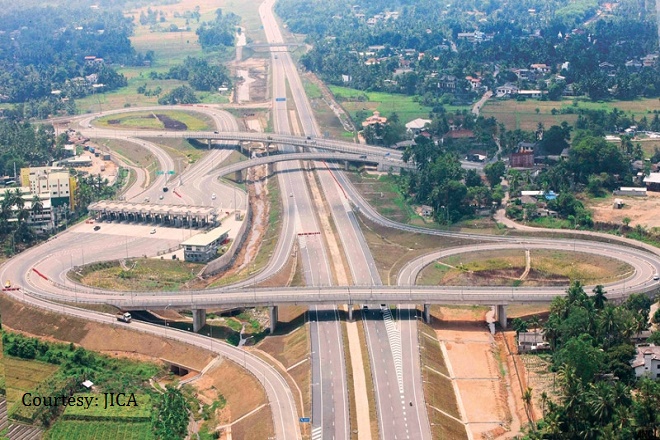buy trazodone online buy trazodone generic
Except for a tendency to drive Japanese cars, Sri Lankans don't think they have a special affinity with the Japanese. Sushi restaurants are becoming quietly popular, but otherwise, the two cultures couldn't be more different.
buy lipitor online lipitor online no prescription
But Japan's impact on the island, through its international development agency JICA, is clear. Through technical cooperation, grants and concessionary loans, Japan has been behind 21 percent of the Ceylon Electricity Board's generation capacity, 24 percent of the island's pipe-borne water production, and 48 percent of expressways currently in operation, Ralapanawe said. The cryptic letters in the acronym can be confusing. The Japanese culture of understatement could also have something to do with it. But those involved in infrastructure know of JICA's role. Sri Lanka's 71 billion dollar economy has received 1.3 billion dollars in grants, 600 million dollars in technical assistance, and the only funds that require repayment, concessionary loans of 7.7 billion dollars from JICA since the mid 1950s. "Up to about 2009-2010, the largest share of loan assistance to Sri Lanka came from Japan. We are still one of the major lenders to Sri Lanka," Ralapanawe said. Loans tied to Japanese technical expertise called "Special Terms of Economic Partnership" carry an interest rate of around 0.1 percent with a 40-year repayment period.
buy ivermectin online ivermectin online no prescription
Loans that do not have this requirement are still concessionary with interest rates of between 0.15 to 1.4 percent, with 15 to 40 year repayment periods. After the end of the war between the government and Tamil Tiger separatists in 2009, the government has been in a better position to borrow for infrastructure investment. This is amid a boom in foreign direct investment and tourism.
buy glucophage online glucophage online no prescription
JICA is involved in sectors including agriculture development, healthcare, disaster prevention, power generation, water supply and transportation. Transportation, which includes road infrastructure, ports and airports, accounts for 50 percent of JICA's investment portfolio, Ralapanawe said. In 2014, JICA assisted the Ministry of Transport to formulate the transportation master plan for the Colombo metropolitan region to promote public transportation, reduce traffic congestion, reduce pollution and increase road safety. It envisaged a system of monorail to supplement modernized bus and railway infrastructure. "The master plan study report was presented to the Ministry of Transport in 2014, and the University of Moratuwa has reviewed the plan.
buy vardenafil online buy vardenafil generic
The final version will hopefully be submitted for cabinet approval this year," she said. From 2000 to 2012, the number of vehicles in the Western Province, where Colombo is located, increased to 1.3 million from 500,000. Investment in transportation needs to continue at a rapid pace, with the number of per person trips within Colombo, per day, set to increase to 14.1 million in 2035, from 6.7 million in 2013, JICA has noted. JICA is also funding a 343 million dollar bridge over the Kelani river connecting Colombo with the expressway network. The loan is tied to Japanese technical expertise and has an interest rate of 0.
buy temovate online buy temovate generic
1 percent, with a 40 year repayment period. The bridge is scheduled for completion in 2020, Ralapanawe said. In August, the Finance Ministry signed an agreement for a 191 million dollar loan to improve the national power transmission and distribution network. The concessional loan is at 0.3 percent interest with a 40 year repayment period. And those are part of the 110 projects implemented with JICA financing. Ralapanawe said one of the unique qualities about JICA is its program of volunteers. Close to 1,000 Japanese volunteers have worked in Sri Lanka over the years. Currently 70 Japanese volunteers are in the island involved in grassroots and hands on projects. The relationship between Sri Lanka and Japan grew substantially after late President J R Jayewardene spoke in defense of a free Japan during the 1951 San Francisco Peace conference. It seems, despite the significant geographical distance between them, the role of the Japan International Cooperation Agency in Sri Lanka's infrastructure development bodes well for ties between the two countries.


How come they did not mention 2 of the most important institutions in the health sector – MRI (Medical research Institute in Borella) and SJH ( Sri Jayewardenapura Hospital) as contributions from JICA on BOT terms.
Also Japan was part of the lenders that helped restructure the state-owned estate sector (JBIC) ; it was the loan package that helped the private sector to take over state-run plantations with cash flow deficits and make them into profitable entities today.
Though not from JICA Rupavahini is a gift from japan with all sony technology (not sure how much of it remains today).
All this because of that one speech made by JRJ at UN after the WWII. However our stupid politicians who came after JRJ kicked Japan away thinking others will be our friend in need.
Stupidity cant be cured with a pill or syrup – unfortunately.
Thank you Chamath Ariyadasa. JICA’s contribution to Sri Lanka’s development cannot be captured in one article, but this is a good start:-)
Contribution to the Port of Colombo from around 1980 has been extensive and valuable ,about USD 500m must have been spent to make Colombo a leading shipping hub.Thanks to Japan.